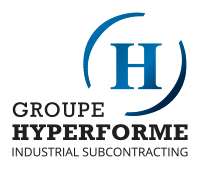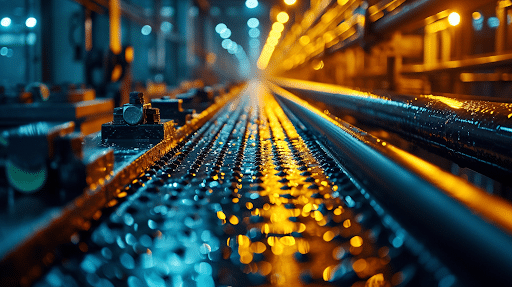What are the Applications of E-Coating?
In the realm of industrial coatings, Electrocoating, or E-Coating, has emerged as a revolutionary solution for protecting metal surfaces from corrosion. This advanced coating technology has found widespread applications across various industries due to its unique properties and benefits. In this comprehensive exploration, we explain what E-coating is, highlight key benefits, and explore the diverse applications that make it an indispensable element in the manufacturing landscape.
What is E-Coating?
E-coating, short for electrocoating, is a process that involves applying a coating solution to a conductive metal component using an electric current. This method ensures complete and uniform coverage on complex geometries and ensures superior adhesion compared to traditional coating methods. The E-coating process typically involves immersing metal components in an electrocoat bath, where the coating material is deposited onto the surface through electrophoretic deposition.
The E-Coating Process
The E-coating process involves several key steps to achieve optimal results:
- Preparation: The metal component undergoes thorough cleaning to remove any contaminants or residues, ensuring proper adhesion.
- Priming: The component is immersed in an electrocoat bath containing paint materials, typically epoxy-based, forming a uniform coating through electrophoretic deposition.
- Electrophoretic Deposition: The component is subjected to an electric field, causing the paint particles to migrate and deposit evenly across its surface. This ensures complete coverage, even in hard-to-reach areas.
- Curing: The coated component is then cured at specific temperatures to create a durable finish. The curing process helps achieve the desired performance properties, including corrosion resistance and adhesion.
- Rinsing: After curing, the component undergoes rinsing stages to remove excess paint and any residual chemicals.
The E-coating process provides a comprehensive and efficient option for metal protection, and its benefits extend across various industries.
How does E-Coating differ from Powder Coatings?
While both provide durable finishes, E-coating uses an electrocoating process involving an electric field, ensuring uniform coverage, whereas powder coatings involve the application of dry powder and may require additional steps for uniformity.
How does E-Coating handle Heavy Metals and Organic Compounds?
E-Coating systems can effectively control heavy metals and organic compounds in the electrocoat bath, minimizing environmental impact. The process allows for the treatment and containment of waste, promoting eco-friendly practices in production.
Key Benefits of E-Coating
E-coating offers several advantages over traditional methods that contribute to its popularity in the manufacturing industry. Here are the key benefits:
- Uniform Coating: E-coat technology provides a uniform thickness of the coating, ensuring consistent protection and maximum efficiency across the entire metallic surface.
- Superior Corrosion Protection: It delivers excellent corrosion resistance, UV protection, and chemical resistance properties, making it an ideal choice for metal products exposed to harsh environmental conditions.
- Single-Coat Application: E-coating often requires only a single coat, making it a cost-effective and efficient finishing application. Moreover, the high-tech process and limited coating eliminate human error.
- Wide Range of Applications: It is suitable for various industries, including automotive, heavy equipment, and electrical components, owing to its versatility, allowing for large production volumes to be completed.
- Adhesion: E-coating ensures superior adhesion to metal surfaces, even in complex geometries.
Applications of E-Coating
Automotive Industry
E-coating plays a pivotal role in the auto industry, providing a durable and corrosion-resistant finish for steel car bodies. The technology ensures complete coverage on intricate components, such as automotive frames and structural elements. The uniform finishes achieved through E-coating meet or exceed industry standards, making it the preferred application method for many manufacturers.
Heavy Equipment Manufacturing
In the production of heavy equipment, where durability and protection are paramount, E-coating stands out. The process accommodates dense rack loading, allowing for efficient coating of large and intricate components. The superior corrosion resistance properties make E-coating a preferred choice for components exposed to rugged outdoor conditions.
Electrical Components
The electrical industry benefits from E-coating technology due to its ability to cover complex shapes and provide complete coverage. E-coating ensures the protection of electrical components against environmental factors, enhancing their lifespan and reliability.
Battery Production Technology
In the rapidly evolving battery production tech business, E-coating has become a crucial factor. It offers a one-coat finish with high quality and consistent thickness, contributing to the efficiency of battery production processes. Manufacturers in this sector value the corrosion resistance and durability E-coating provides to critical structural components.
Industrial Coatings
E-coating finds applications in various industrial settings beyond automotive and heavy equipment. Its efficiency rates and consistent film thickness make it a popular primer technology for a wide range of metal products, always ensuring a quality finish. The technology’s ability to adapt to different shapes and sizes contributes to its widespread use in industrial coating facilities.
Coating for Household Appliances
Household appliance manufacturers prefer E-coating for its outstanding adhesion and extensive color capabilities. The ability to provide a uniform coating thickness contributes to the visual appeal of appliances, while the corrosion resistance ensures a longer service life in diverse indoor environments.
Aerospace Industry
In the aerospace industry, where stringent quality requirements are non-negotiable, E-coating is employed for its ability to meet high-performance standards. The technology ensures uniform high-edge coverage on complex metal structures, contributing to the overall durability of aerospace components.
What exactly is industrial subcontracting?
Innovative E-coating Subcontracting Solutions
Groupe Hyperforme excels in industrial subcontracting services, offering comprehensive solutions for businesses seeking to outsource expertise. With a focus on precision, efficiency, and quality, we provide a wide variety of specialized manufacturing services, including E-Coating services. Our commitment to innovation and client satisfaction positions us as a trusted partner in optimizing industrial processes and ensuring top-notch product delivery.
Our comprehensive services include:
- COMPOSITE AND PLASTICS
- ELECTROMECHANICS
- INDUSTRIAL PAINT APPLICATION
- METAL LASER CUTTING
- RUBBER
- WOOD TRANSFORMATION






